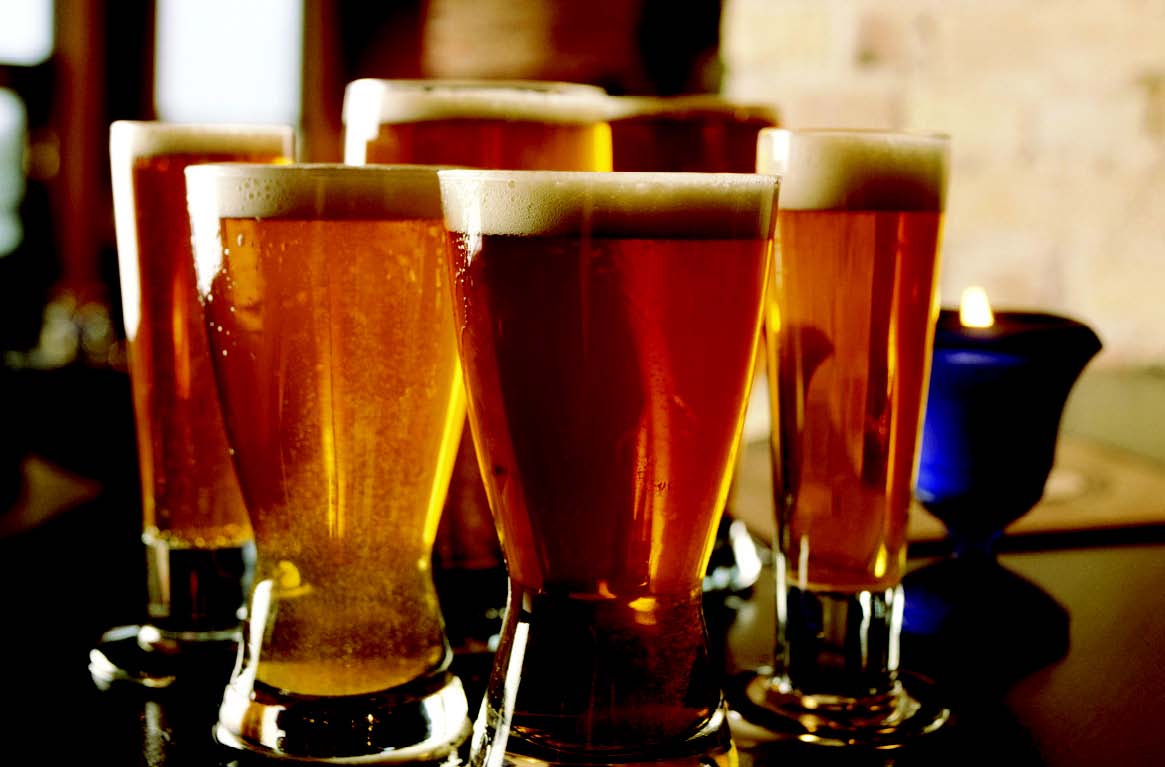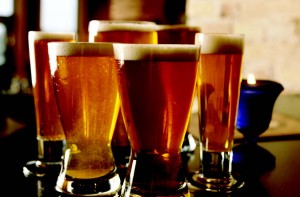
By Jack Kenny
Here’s an interesting fact about beer: It’s the only alcoholic beverage, and could be the only drink, that produces and maintains a stable crown of foam. Sure, you will get a pronounced head from sparkling wine and from some sodas and ciders, but beer tops them all in retention. That, dear readers, is because of science!
The head on a beer is a gift to the olfactory sense. Because of how it’s made, it will cause more aromatic compounds to be transported to your nose than will the liquid beneath. It holds the essences of barley and hops, plus whatever other grains are in the brew, and amplify the beer drinking experience.
Some cultures praise the beer head, while others aren’t fond of it. We know what causes it, but it still holds mysteries, and that’s why today you can get a university degree in beer foam.
Beer foam is a distribution of gas bubbles in liquid, and that gas is carbon dioxide (CO2). Beer can be described as a supersaturated beverage because brewers have managed to dissolve more gas in the beer than is theoretically possible under normal conditions. When that gas is released through turbulence (pouring) or other means, it heads to the top of the liquid and becomes foam. But what keeps it there?
Beer has the fortune of possessing a high concentration of proteins, which are released from the grains used for fermentation. Proteins are complex (they make up a great deal of DNA), and have areas in their structure that are both hydrophilic (attracted to water) and hydrophobic (repelled by water). When a protein encounters a gas bubble, the hydrophobic portion of the protein migrates away from the water into the wall of the gas bubble. There it will form links with other proteins through electrostatic interactions, creating what could be described as a “skin” around the gas bubble.
In beer, the skin is strengthened by the bitter hop compounds, known as iso-alpha acids, which migrate into the bubble wall because they, too, have hydrophobic characteristics. Once they are in the bubble wall, the hop acids help to strengthen the protein skin, and it is this that creates a much more stable foam. (Beer foam, by the way, tastes more bitter than the liquid because of the concentration of hydrophobic iso-alpha acids.)
 The head on a glass of beer is not self-sustaining, however. Eventually it will disappear due to one or more causes. It is possible, though, to prolong the existence of the foamy collar through the process of nucleation. This is something that is done to a beer glass by the manufacturer. A nucleation site is anything that allows CO2 bubbles to form in the beer. Natural nucleation sites could be small scratches or cracks on the inside of the glass. Deliberate nucleation can be created by etching a mark or a design – such as a letter or a logo – at the bottom of the glass to cause the generation of bubbles, thus permitting the pint to put on a live show for its entire existence.
The head on a glass of beer is not self-sustaining, however. Eventually it will disappear due to one or more causes. It is possible, though, to prolong the existence of the foamy collar through the process of nucleation. This is something that is done to a beer glass by the manufacturer. A nucleation site is anything that allows CO2 bubbles to form in the beer. Natural nucleation sites could be small scratches or cracks on the inside of the glass. Deliberate nucleation can be created by etching a mark or a design – such as a letter or a logo – at the bottom of the glass to cause the generation of bubbles, thus permitting the pint to put on a live show for its entire existence.
Lipids, including oils and fats, are major enemies of beer foam. Lipids are also hydrophobic, so they will migrate into the head and join the proteins and hop acids on the bubble skin. Once there, however, they do not behave well, interfering with the bond between the other compounds and causing the bubbles to collapse. Lipids are most likely introduced into the beer via the glass itself (not fully cleaned and dried), and from foods and cosmetics, such as lipstick.
Another bubble burster is water. Beer poured into a wet glass will have a weaker head because the hydrophobic actions of the proteins are overwhelmed. This isn’t always a bad thing. Wheat protein produces monumental heads on beer, and in order to pour a wheat beer that is not dwarfed by its foam the bartender will start with a glass dipped in water.
A third anti-foaming agent is alcohol. The higher the alcohol level, the greater the inhibition of the head. Anyone who has enjoyed a barleywine or other high strength beer will note that the starting head is not a main feature of the beer, and tends to disappear rather soon.
There’s one magical method to getting the proper head on a particular beer, and that is the pour. A great bartender will understand that all beers are different, and that the truly good head of foam requires an artist’s touch.
Jack Kenny has been writing The Beer Column for The Beverage Journal since 1995. Write to him at thebeercolumn@gmail.com.




